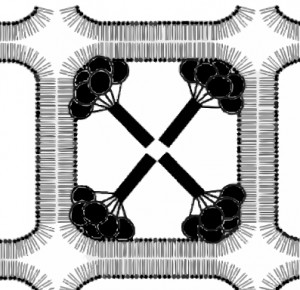Don’t you love generalities and analogies: Here is mine for the day. WOE to big pharma, WOE to big software companies. YOU WILL EXTINCT YOURSELVES with useless updates and changes. I will purchase neither.
The world thinks that updates in software (read in –new drugs for what ails us) are necessary, NO SO. Unnecessary change is not always a good thing…..e.g. how many mutations and iterations in nature fall by the wayside, before one good thing evolves.
I cannot tell you how I resist the philosophy that all change is GOOD, because most change is unrealistic, unnecessary, it wastes my time, and should be kicked to the side of the road. The software now on the market for Joe Public is soooooo far above their needs and capabilities, and sooo limits our ability to use and benefit from that software, that it becomes just the tech companies (read also big Pharma), race to insanity. The software companies update new and deliberately sabotage old software. The drug companies develop new species of drugs that they hope will be better sellers, never finishing the testing of drugs they have made and currently sell to make sure they are really doing the job they should.
I have tried to stay current with my favorite of all programs, which can do grants, pdfs, huge documents, wonderful adaptations of text with picture interfaces, and some image processing as well as vector graphics, stained glass, cross stitch, beading stitch patterns, outreach brochures, and images for videos, making interfaces with the printing world and the web world possible…. that software has already passed me up three version. I use this software daily and have not yet even “touched” on all it’s capabilities of the version I have, and would only be hindered by an update. It is just greed and wheel spinning and a waste of time to even try to stay abreast of that kind of change.
Our university has people in charge who think (like a previous division head –not mentioned by name– who used to think that “unless you have the latest version of anything (in this case it was requested of me to purchase a $250,000 electron microscope – i am sure they are half a million by now — and he and berated my IQ for recognizing that the scope was not the problem, it was the “minds eye” behind the eyepieces that was the limiting factor. His “vision” for the division wasn’t that great (bad pun intended). The microscope itself is rarely the limiting factor.
The university here tells me what software I MUST use for my webpages, what colors i must use, what swish and swhoosh is passable, good grief. can they really mandate what pencils and markers I should push and what colors I must use to deliver science. As early as 20 years ago I could not CHOOSE what word processing program I liked, but had to conform. How sad. I think it will be the utter downfall of the whole university – which is in cahoots with – and under the pressure of, the big software companies to buy licenses and make deals. We are not a university any more, but a business. I reiterate, how sad.
And to drive the UNIVERSITY BUSINESS PLAN home, see a parallel here with big Pharma.. like the MDs and the big drug companies deals. In fact that analogy is perfect….. like the statins that are so readily scripted out… I listened to Dr. Daniel Levitin for the numbers… and it seems …. 300 people have to be taking the one of these drugs before a single individual of those 300 persons will benefit…. SO for those 299, the side effects are uncomfortable at least, the insurance companies, or individuals pay bundles, there is NO health benefit, and for 15 of these people, the side effects are catastrophic…. all this for 1 person to benefit, and for big Pharm to make big BUCKS. Would you care to listen to similar statistics facts on mammography, biopsies, and chemo for breast cancer.
So is a new software update similar…. same as the DRUG – GENE interaction scenario…. 299 of 300 people have to suffer with a new software updates (ordinary people like me), to allow the ONE person to benefit from the new version. And for 15 of those people the end result of that software update is catastrophic — previous versions of programs don’t work, data are lost, countless hours are spent re-claiming and re-doing files.
This is a total waste of energy and time for the 299… it is at best, inconvenient, maddening, a waste of money and time and there is NO benefit at all.
I wonder who will say “no thanks” loudly enough to make a difference. Are we all just going to “take it without even whimpering”

